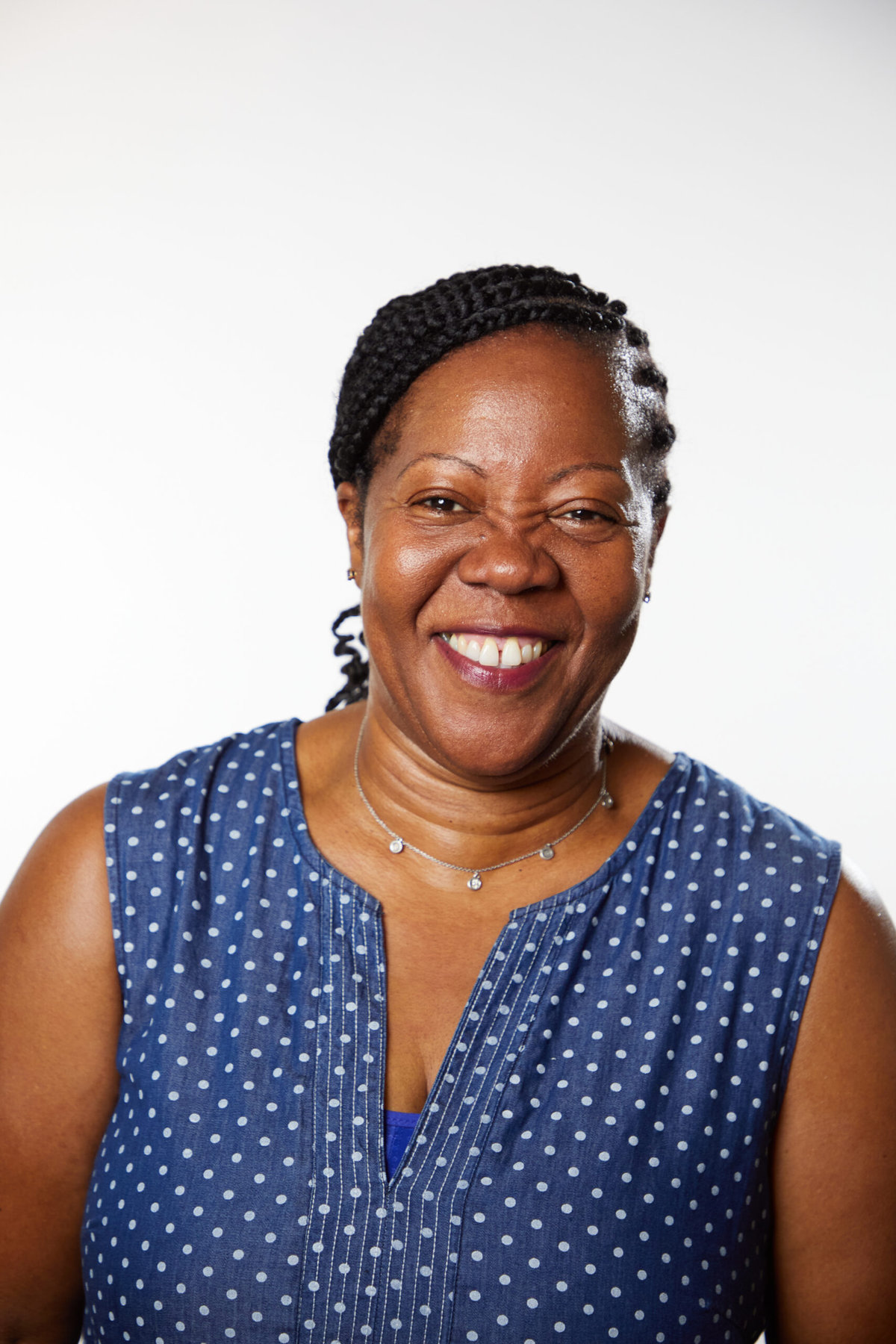school
”What Do You Mean School Holidays Is Still 2 Week’s Off!” Scream Nation’s Teachers
Australian school teachers have let out a collective scream, upon the realisation that the World’s longest term still has a week and a half to go.
”Oh, dear God please end this term,” cried Launceston Primary school teacher Mary Chalk. ”The kids are ratty, they’re all sugared up from Easter and quite frankly I’m not paid enough for this.”
”An 11 week term! What genius thought this one up.”
It’s not just Teachers upset, parents aren’t happy with school holidays and Easter not lining up this year as well.
”Bloody bureaucrats, don’t they realise that a lot of people just go away for the whole Easter/school holidays.” said Father of two Ivar Jeep. ”I mean, this weekend we only got a couple of days down at the shack, wasn’t even worth bringing down the boat.”
”And we’ve gotta do it all again in two weeks time.”
”Should’ve just left the boat there.”
The education department could not be reached for comment, they were already on holidays.
Mark Williamson
@MWChatShow
You can follow The (un)Australian on twitter @TheUnOz or like us on Facebook https://www.facebook.com/theunoz.
We’re also on Patreon: https://www.patreon.com/theunoz
The (un)Australian Live At The Newsagency Recorded live, to purchase click here:
Health Officials To Ban Fairy Bread And Replace It With Mung Beans
Australian health officials are reportedly set to ban a childhood favourite, fairy bread, in schools and day care centres and replace it with mung beans. The move is designed to get children away from sugar and used to a life that contains little to no joy.
”We need to get our kids healthy, active and ready for a life in which they work hard to make things better for the boomers,” said a health official. ”Sugar can cause weak bones and obesity, which we don’t want in our future aged care workers.”
”Little fatties grow in to big fatties and that’s not a good thing.”
When asked why mung beans were chosen as the dish designed to replace fairy bread, the health official said: ”Our bad we let the Greens decide.”
”Apparently some people like mung beans.”
”Sorry kids, anyway don’t be sad, it could’ve been worse the Greens did want to replace Zooper Doopers with Kale pops.”
”We had to draw the line somewhere.”
Mark Williamson
@MWChatShow
You can follow The (un)Australian on twitter @TheUnOz or like us on Facebook https://www.facebook.com/theunoz.
We’re also on Patreon: https://www.patreon.com/theunoz
The (un)Australian Live At The Newsagency Recorded live, to purchase click here:
The Over-50s Turning to Teaching
At the age of 55, Deepak Swaroop left his global role as a senior partner at an accounting firm to embark on a new path as a startup founder. Lacking the change and fulfillment he was hoping to find in this world, he then dabbled in retirement, only to feel unsatisfied by his new activities of golf, walks and trips to the library.
He’d read about Lucy Kellaway, the Financial Times editor who left journalism to become a trainee teacher and went on to found Now Teach, an organization that helps people change careers and become teachers, in 2017. After sitting in on lessons at five different schools, his mind was made up: He would retrain as a high school math teacher.
 Deepak Swaroop now teaches high school math. Courtesy of Now Teach
Deepak Swaroop now teaches high school math. Courtesy of Now Teach
Three years on, Swaroop feels energized and inspired — even if he is now earning a fraction of what he used to.
“Money wasn’t really the make or break for this option,” says London-based Swaroop. “I was keen to do something which had a purpose, so I could contribute back to society in a way. My view was that I don’t think I can contribute a lot of money to charity, but I can definitely contribute my time.”
Finding a new purpose in the classroom
Swaroop is one of the 850 people who have left careers like finance, IT, medicine, science, engineering and more to retrain as teachers through Now Teach, which relies on both government funding and corporate donors. Now Teach helps them gain a Postgraduate Certificate in Education, which typically takes one to two years depending on whether it’s done in a full- or part-time capacity. Now Teachers are also encouraged to apply for the many scholarships and bursaries on offer.
Crushed by negative news?
Sign up for the Reasons to be Cheerful newsletter.
[contact-form-7]
Teacher vacancies in England have doubled since before Covid, and the government is well short of its target to recruit new trainees, as the Guardian reports, fueled by a lack of pay increases and failure to improve the heavy workload and long hours, plus more attractive opportunities abroad.
But Now Teach, and second-career teachers like Swaroop, are playing a pivotal role in helping fill the country’s teacher shortage. The organization has hit on a winning formula by focusing on an otherwise overlooked segment of the employment market: the over 50s. The average age of Now Teach teachers, the organization confirmed, is 49, with the oldest being 70. Countries like Australia are also looking to midlife career changers to meet shortages of math, science and technology teachers.
As Now Teach CEO Graihagh Crawshaw-Sadler acknowledges, many will have taken a pay cut to pursue this new path, but they’ve reached a point in their life where their priority is satisfaction over salary.
 Now Teach CEO Graihagh Crawshaw-Sadler. Courtesy of Now Teach
Now Teach CEO Graihagh Crawshaw-Sadler. Courtesy of Now Teach
“It’s not about the money, it’s about what this opportunity is affording them in terms of motivation, and knowing that they’re having an impact on young people,” says Crawshaw-Sadler. “We’ve got an awful lot of people who perhaps would have been looking to take early retirement, who are doing this instead. And then a large number who actually realized they’ve got a significant number of years left working. They’ve done what they want to in their current career, and it’s time to do something different. People are living and working longer, and they reach a point where they’ve given a lot to a particular profession, and they want to kind of make the next five to 15 years really count.”
This later life ambition is something Swaroop certainly relates to. “I just want to get into the classroom and teach,” he says. “I don’t have an objective of becoming a head of school. Previously, I would actively try to move up the ladder. That is being replaced by my desire to be more committed to my teaching.”
“I have had students write to me that I have helped them realize their potential and what path to take in the future. That is more valuable to me than money.”
Making schools more diverse
Originally from New Delhi, India, Swaroop is also proud to enrich the cultural diversity of his school, which, up until a few years ago, had a predominantly white teaching staff despite its highly multicultural student body. This reflects Now Teach’s success in attracting ethnic minority recruits at a higher rate than the national average and helping to close the representation gap between pupils and teachers. Thirty-two percent of its new trainees come from an ethnic minority, versus 19 percent of this year’s overall national cohort of trainee teachers and the overall national teacher rate of 21 percent, with 36 percent of pupils across the country being from an ethnic minority, according to figures shared by Now Teach. This equalizing effect also extends to gender: 44 percent of Now Teach’s intake this year were men, versus 30 percent nationally.
Indeed, Swaroop has often felt like the odd one out on the teaching staff. “My head of department is a 31-year-old man. He treats me with respect and shares things with me, but ultimately, I’m a junior teacher,” he says. “Initially, I would admit I found it challenging to be around such a young group of fellow teachers, who would think differently and would have different aspirations from me.”
Accepting that your age doesn’t match your seniority when you become a second career teacher doesn’t come easily, acknowledges Now Teach’s Crawshaw-Sadler.
“That’s the balance our Now Teach-ers have to find — being a novice, at the same time as being incredibly experienced. That’s one of the things we often focus on in the coaching support our trainees have with us, on how to tread that line and have the greatest impact, whilst also learning a brand new craft,” she says.
 Beverly Melbourne retrained as a teacher in 2022. Courtesy of Now Teach
Beverly Melbourne retrained as a teacher in 2022. Courtesy of Now Teach
A healthy dose of humility, and adopting the view that people can lead multiple lives in one lifetime, has kept 56-year-old Beverly Melbourne grounded in her transition from government education policy advisor to high school English teacher.
Like Swaroop, Melbourne read about Now Teach in the Financial Times, and was ready to do a job where she could see and experience the impact of her actions. She retrained in 2022, and now, aged 56, is in her first year on the job.
She believes her colleagues and students appreciate the different perspective she brings based on her life experience.
“I’ve written policy, I’ve contributed to government speeches, I’ve done research. I can tell students how important it is to treat your colleagues well. I can tell them that soft skills are just as important as academic skills, because I’ve worked in meetings, created networks,” says Melbourne, who is based in the West Midlands region of the UK.


Become a sustaining member today!
Join the Reasons to be Cheerful community by supporting our nonprofit publication and giving what you can.
“Those other skills are just as important to produce people that will be successful, not just for themselves, but for others as well.”
She too has left behind her ambitions to climb the corporate ladder, instead valuing the emotional reward of having a direct hand in a young person’s future.
“When you make a difference in education, the ripple effects are everywhere,” says Melbourne. “When we’re dead and gone, nobody’s going to remember what we got paid. They’re going to remember how we contributed to our family and to other individuals.”
The post The Over-50s Turning to Teaching appeared first on Reasons to be Cheerful.
A Surprising Way to Stop Bullying
When Ben was 11 years old, his parents noticed that his grades dropped. He stopped talking about school. On Sunday evenings, he often complained about stomach aches and begged his mom to keep him home the next day.
“These are all typical signs there might be a bullying problem,” says Bettina Dénervaud, co-founder of the Swiss initiative Hilfe bei Mobbing, which translates as “Help with Bullying.” She and her two colleagues use a 30-point checklist to evaluate if there is an underlying issue of mental, emotional and physical bullying or something else — maybe a conflict, which might require conflict resolution. “A conflict is usually resolved in a matter of days or weeks, but bullying can go on for months or even years,” Dénervaud says.
What happens next sounds counterintuitive. Instead of being punished, the bullies are invited to help the bullied student. In a 2008 study that looked at 220 bullying cases, the No-Blame Approach, as this method is known, was successful in 192, or 87 percent, of the cases. In most schools that were evaluated, it only took two or three weeks for the bullying to stop.
It was the stunning success rate that prompted Bettina Dénervaud to sign up for training with mediator Detlef Beck in 2016 and to start a consulting office for bullying in 2019.
 Bettina Dénervaud. Courtesy of Bettina Dénervaud
Bettina Dénervaud. Courtesy of Bettina Dénervaud
With Ben, Dénervaud began by encouraging a personal talk between him and the teacher he trusts most. (Dénervaud or one of her colleagues is sometimes present in person or via Zoom if the teacher has not been trained in bullying intervention.) The goal is for Ben to talk openly and confidentially about everything that happened, his emotions and his thoughts about the bullies.
“This is an opportunity for them to get everything off their chest that bears down on them, and to make sure we have their consent for the next steps,” Dénervaud explains. “Nothing happens against the victim’s wishes, and even the parents aren’t told details about what the child revealed in the confidential talk.”
In Ben’s case, this was the first time anybody learned that the bullying had been much worse than his parents and teachers assumed. It included other children tripping and shoving Ben, name-calling and excluding him from games. He had also been voted “ugliest” in his class in an online “poll.” The bullying had started much earlier and gone on for much longer than the parents feared. The teacher also asked what would help him feel safe.
The second step is the core of the No-Blame Approach. It includes calling six to eight children that the teacher chooses into a meeting that is set up as a social get together: in Ben’s case, three of the bullies, three students Ben felt he could count on and two “neutral” tag-alongs. The children are not told the meeting is about Ben. “I have a problem,” the teacher might start the discussion after some small talk. “I noticed some students don’t feel supported in class. What can we do to help them, for instance, Ben?”
The teacher carefully avoids calling out the bullies, and instead says: “I notice the other students are looking up to you. What you say counts.” In Dénervaud’s experience, “That immediately makes the bully feel seen. They feel they matter.”
The teacher then asks for suggestions: “What do you think you could do to help?”
“We could include him in our afternoon soccer group,” one boy volunteered. “I could talk to him in the breaks,” another suggested.
The group writes these suggestions on a whiteboard.
The third step includes follow-ups with all students, including Ben, within the next few weeks. If necessary, the intervention might be repeated or tweaked.
“The goal is to change the social dynamic,” Dénervaud says, “and to lay open what has been happening.” Younger children often start crying in these meetings, Dénervaud has observed, “because they realize for the first time what has been happening and how unhappy the bullying victim has been. We talk about empathy, tolerance and respect. How do I want to be treated and how do I treat others?”
 Nearly every fifth student in the US and Europe says they have experienced bullying. Credit: Ground Picture / Shutterstock
Nearly every fifth student in the US and Europe says they have experienced bullying. Credit: Ground Picture / Shutterstock
The “No-Blame Approach” was developed in the early 1990s in the UK by the psychologist Barbara Maines and the educator George Robinson. Even in severe bullying cases, this approach encourages educators and psychologists not to blame and punish the perpetrators, except for criminal offenses. Two German mediators, Heike Blume and Detlef Beck, simplified the approach further and have trained more than 20,000 educators in Germany, Austria and Switzerland since 2003.
Switzerland is number one in bullying, according to the global 2018 PISA (Programme for International Student Assessment) study by the OECD (Organisation for Economic Co-operation and Development). The survey shows a rise in school bullying since the previous PISA survey in 2015, with the rate of physical bullying more than doubling in Switzerland.
Bettina Dénervaud can only speculate about the reasons: “Maybe the pressure to perform?”
Experts agree that bullying can cause severe harm, including depression and anxiety, self-harm, health complaints and decreased academic achievement. “If this issue is not dealt with, the harm can persist for many years, even far into adulthood,” Dénervaud has observed. A Washington Post analysis found nearly 200 incidents in the US in recent years when a bullied student took his or her own life.
Nearly every fifth student in the US and Europe says they have experienced bullying. Nearly half of teens say they have been the victim of cyberbullying, according to a 2022 survey by the Pew Research Center. In the US, most states have enacted laws against bullying, but how they are implemented on the ground varies greatly, not only from state to state, but also from school to school.


Become a sustaining member today!
Join the Reasons to be Cheerful community by supporting our nonprofit publication and giving what you can.
Dénervaud has been a language teacher for more than two decades, mostly for adults but also for teenagers and children. Because parents, students and teachers frequently asked her for advice on bullying, she grasped the enormity of the need and decided to focus on that issue: “I realized there were not a lot of specialized offerings. In the standard teacher training, the topic is addressed in a two-hour lecture, which simply isn’t sufficient.” Concerned parents or teenagers are often told to call the mental health hotline, Dénervaud says, “but it usually offers general psychological advice, not specifically how to proceed and what the next steps should be regarding bullying.”
Hers is the only office in Switzerland solely dedicated to the issue of bullying, though the magnitude of the issue is rising worldwide.
She and her two colleagues get about 10 calls a week, she says, “mostly from parents or from schools who request training for their staff.” She is frustrated by what she sees as a failure of schools to take the issue seriously. “We often hear, ‘Oh, the kids will sort it out.’ We sometimes see glaring inaction by the schools who try to dodge responsibility,” Dénervaud says. “Too often, we learn that the schools do nothing, or even worse, they put the victim and the perpetrator at one table and expect them to sort it out. That’s almost always counterproductive.”
In Dénervaud’s experience, punishing the perpetrators tends to make the bullying worse for the victim. “Usually the bullies will make the victim ‘pay.’ Or the victim gets sent into therapy, enforcing the feeling there must be something wrong with him or her, because they are singled out and need to get help, while no intervention happens with the bullies.”
Somewhat surprisingly, Dénervaud says in her experience, bullying is not tied to specific victim characteristics, such as weight, looks or social status, though data shows LGBTQ+ students are at a significantly greater risk of bullying than their peers.
“Contrary to what most people believe and what I, too, believed at the beginning, there is no ‘typical’ bullying victim. Really anybody can be singled out to become the victim of bullying,” she says. “That’s why focusing on what is perceived as being ‘wrong’ with the target, such as losing weight or changing their looks, does not work.”
She sees the underlying causes of bullying in the social dynamics at a school. The nerd with glasses who is bullied in one school might be envied in another community for his smarts.
 Hilfe bei Mobbing provides training on the No-Blame approach for teachers, principals and other educational specialists. Courtesy of Hilfe bei Mobbing
Hilfe bei Mobbing provides training on the No-Blame approach for teachers, principals and other educational specialists. Courtesy of Hilfe bei Mobbing
This is part of the reason Dénervaud is convinced parents and bullying victims must not be left alone to solve the issue. “These parents are often desperate and sometimes even sell their home and leave the community they were a part of, uprooting the siblings, too, in order to send their kid to a different school,” she explains. In Switzerland, parents have to send their kids to the public school closest to their zip code unless they can afford the tuition for private school.
Because she tried in vain to get public funding and make her service free, Dénervaud and her two colleagues have to charge either the parents or the schools for the consultations and trainings. “I wish we could offer it for free,” she says.
She sees limits to the No-Blame Approach “when bullying has gone on for too long, sometimes for years. Then the patterns are so ingrained that removing the victim from the situation might be the best solution.” And sometimes, she admits, the approach is poorly implemented. “Then we intervene or try the approach again with a different group of students.”
Crushed by negative news?
Sign up for the Reasons to be Cheerful newsletter.
[contact-form-7]
When bullying turns into criminal behavior, she recommends involving the authorities. One of the worst cases in her practice was that of a student who was made drunk and severely sexually abused. “He ended up leaving that school because the abuse had also been documented on video and circulated at school and there was no way for him to go back there,” she says. “But the school then still needs to work with the students who stay there.”
Other approaches that have shown success include the Olweus Bullying Prevention Program, which involves the entire school; KiVa, a method developed at the University of Turku, Finland, with funding from the Ministry of Education and Culture, that claims to have helped 98 percent of students; and Positive Action.
Virtually all experts agree that it is best to act preventatively or intervene at the first signs of bullying rather than hoping the issue might resolve itself on its own.
In Ben’s case, the intervention was successful. After a month, his stomach pains stopped and he looked forward to going to school again.
The post A Surprising Way to Stop Bullying appeared first on Reasons to be Cheerful.
Video: IDF ‘executes’ Palestinian women, children, babies in school
CONTENT WARNING: harrowing Al Jazeera video exposes horrific scene of slaughter
A video released by Al Jazeera shows the bodies of women and children ‘piled up’ in a school near Jabalia in northern Gaza, where they had been shot at point blank range by Israeli soldiers who witnesses say had already executed the men sheltering with them.
Human rights watchdog Euro Med Monitor has also reported ‘executions’ by occupation troops:
Well over 66,000 parliamentarians, civil society figures and others from around the world have today called on the International Criminal Court to launch a formal war crimes prosecution against Israeli PM Benjamin Netanyahu, his cabinet and others responsible for the growing list of murders and atrocities in Gaza.
In case the Al Jazeera YouTube video is deleted, it is accessible here.
SKWAWKBOX needs your help. The site is provided free of charge but depends on the support of its readers to be viable. If you’d like to help it keep revealing the news as it is and not what the Establishment wants you to hear – and can afford to without hardship – please click here to arrange a one-off or modest monthly donation via PayPal or here to set up a monthly donation via GoCardless (SKWAWKBOX will contact you to confirm the GoCardless amount). Thanks for your solidarity so SKWAWKBOX can keep doing its job.
If you wish to republish this post for non-commercial use, you are welcome to do so – see here for more.

